Table of contents
- PS-Technik series part 17 Electronic injection and engine control
- The throttle cable has had its day, now it’s time to wire
- Semi-active chassis increases compression damping
- At the apex of the curve, the e-gas regulates the acceleration
- ABS usually already linked to the engine control
- More driving comfort through smartly controlled throttle valves and ignition curves
- BMW one step further with automatic gearshifts
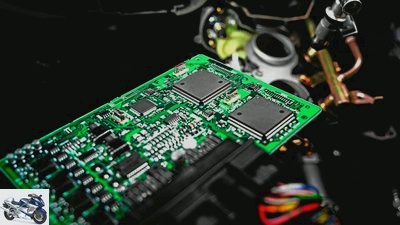
Yamaha
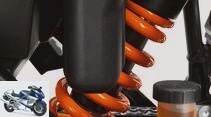

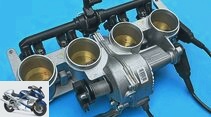
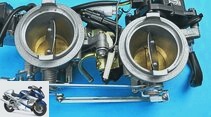
20th pictures

KTM
1/20
HP knowledge technology part 17 – Electronic injection and engine control.
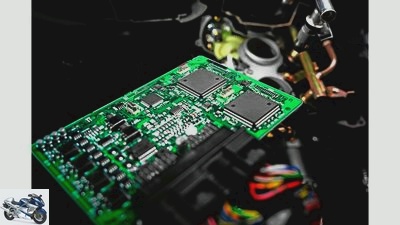
Yamaha
2/20
HP knowledge technology part 17 – Electronic injection and engine control.

archive
3/20
Like Yamaha, BMW took the safe route at the beginning of the electronic throttle and installed a ratchet mechanism on the throttle cable. This ensured that the driver could mechanically close the throttle valves in any case. The current e-gas constructions do not have this protection.
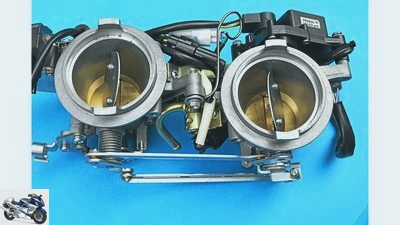
archive
4/20
Even with the double throttle valves of a Suzuki GSX-R 1000 or KTM RC8 (photo), the upper butterfly valves are operated by electric servomotors. The signal for this is picked up on the primary flaps.
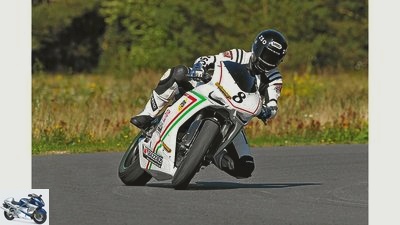
fact
5/20
The traction control makes it possible: Standing sideways, with a lot of slip on the rear wheel, Christian Kellner drifts out of the curve in the PS traction control test.
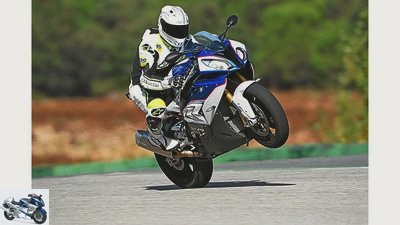
BMW
6/20
The electronics also intervene when doing a wheelie and only open the throttle valve so far that a backward somersault is excluded.
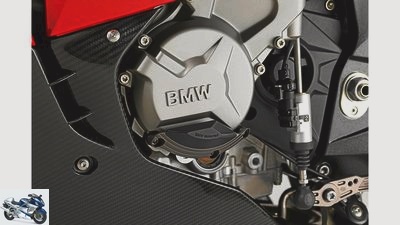
BMW
7/20
With the Quickshifter, here on the BMW S 1000 RR, the gears can be shifted through with little interruption in traction because the gas remains open and the clutch does not have to be pulled.
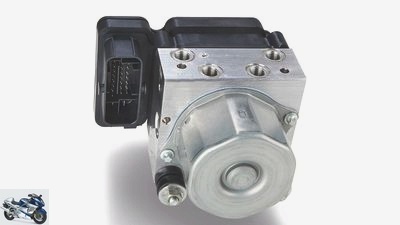
KTM
8/20
HP knowledge technology part 17 – Electronic injection and engine control.
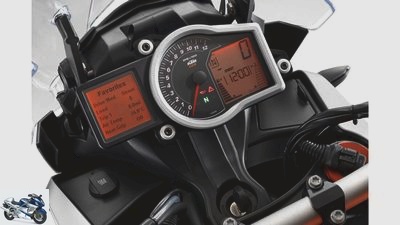
KTM
9/20
HP knowledge technology part 17 – Electronic injection and engine control.
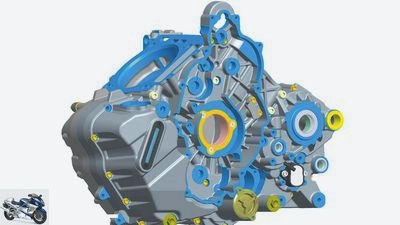
KTM
10/20
HP knowledge technology part 17 – Electronic injection and engine control.
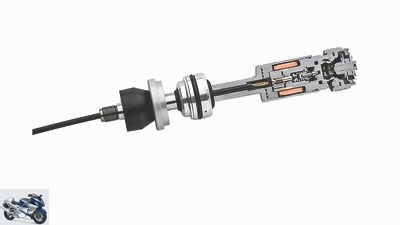
ZF
11/20
There, the hydraulic resistance is changed in milliseconds by applying different amounts of current to the electromechanical “damper piston”.
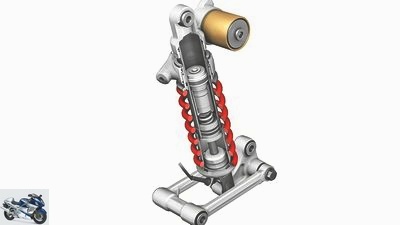
BMW
12/20
Outwardly, semi-active shock absorbers can hardly be distinguished from conventional components. The cables lead into the housing at the damper base, where the adjusting screw of the rebound valve is usually located.
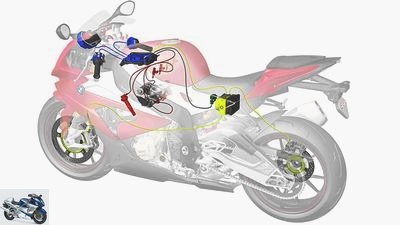
BMW
13/20
This ECU (blue) also responds to information from ABS and traction control. The most important information for both comes from the sensors that record the wheel speed at the front and rear (green).

BMW
14/20
In the semi-active chassis, the fork and shock absorber are linked to the computer, which also houses the engine control.
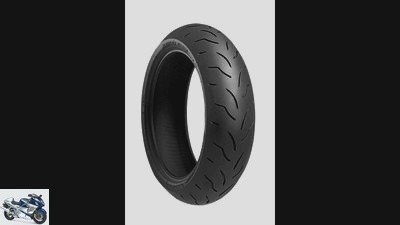
manufacturer
15/20
Due to the different sized tire diameters when driving straight ahead …
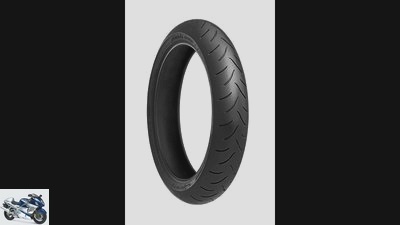
manufacturer
16/20
… and in curves, the detection and the comparison of the wheel speeds are very complicated.
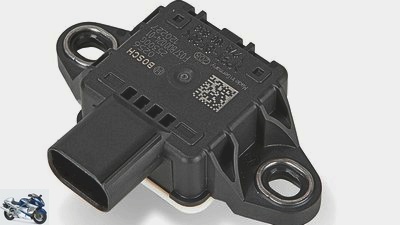
KTM
17/20
A Bosch 3-axis gyro supplies the data on inclinations and accelerations around the longitudinal, vertical and transverse axes and thus records the vehicle movements.

KTM
18/20
As on the KTM 1290 Super Duke R, the wheel speeds are determined by toothed disks and sensors and forwarded to the ECU. These finely resolved impulses (up to 60 per wheel revolution) are the basis for traction control and ABS.
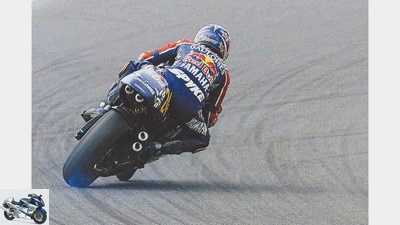
archive
19/20
Such handmade drifts as Garry McCoy burned onto the asphalt with the Yamaha YZR 500 two-stroke are unfortunately rare today.

KTM
20/20
HP knowledge technology part 17 – Electronic injection and engine control.
counselor
technology & future
electronics
PS-Technik series part 17
Electronic injection and engine control
Content of
More and more sensors and electronic controls intervene if the motorcycle threatens to get in a lopsided position. PS explains how and when the electronics are by the driver’s side – and when not.
Werner Koch
11/12/2014
If we look back, it was less than 15 years ago, for example, when the epoch-making Yamaha YZF-R1 had to do without any electronic driving aids. The full torque, the poisonous brakes and a breathtaking acceleration were subject to manual control by the driver. The R1 could only be mastered with a lot of feeling in the throttle hand, a fine motor performance on the brakes and a highly sensitive popometer and separated the wheat from the chaff. Rough motor skills sailed in a high arc, new German: Highsider, through the air, grabbed their ears when braking in an inclined position or fluttered helplessly like a flag on the handlebars in a power wheelie.
Buy complete article
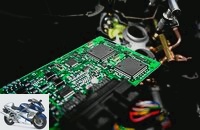
PS technology series part 17
Electronic injection and engine control
6 pages) as PDF
€ 2.00
Buy now
With the networking of countless sensors and parameters, the designers and technicians try to record the driving condition of modern motorcycles and to influence it with ingenious controls so that the driver is faster and / or safer on the road. With the switch from carburetor technology to injection technology, there was also the possibility of smoothing out the power delivery in high-performance engines and making it more usable. With the so-called double throttle valve, people started moving in the direction of ride-by-wire technology around ten years ago.

workshop
PS technology special
Further training for motorcyclists
read more
The throttle cable has had its day, now it’s time to wire
The driver operated the primary throttle valve using conventional throttle cables, but the secondary throttle valves above were opened by an electric servomotor. And that was controlled by a stored map that, depending on the load, speed and gear, unlocked the power output with a slight delay. For example, the nominal 178 hp Suzuki GSX-R 1000 K6 engine became a powerful, but extremely finely metered drive with the best of manners.
Yamaha rushed forward and left the throttle control of the classy YZF-R6 from 2006 to a small servomotor, the age of the “real” ride-by-wire had begun. Initially with a mechanical safeguard in which the throttle cables could mechanically close the throttle valves in any case, the designers of the current high-tech motorcycles rely solely on a throttle that forwards the commands to the servomotor via cables. In connection with the electronic ignition, not only the engine output, but also the exhaust gas behavior, load changes and consumption values can be influenced. The first traction controls followed, ensuring maximum acceleration with controlled slip. While the focus was initially on safety on wet roads, unpredictable bitumen stains or slippery bridge heels made of steel plates, the major manufacturers soon copied the technology from racing. With the sole aim of making their super athletes even faster for everyone when accelerating in an inclined position.
Semi-active chassis increases compression damping
Current state of affairs: By recording the incline of the machine, a slip can be generated on the rear wheel, with which the motorcycle can be accelerated slightly sideways while drifting out of the curve. An acrobatic balancing act that, until a few years ago, was reserved for a dozen highly talented lads. And how does it work? With the data recorded in real time, which are calculated from a bundle of parameters. On the one hand, the wheel speed is recorded via the toothed disks at the front and rear. However, since this changes depending on the lean angle (change in the wheel diameter), the actual rolling circumference, i.e. the shape and contour of the tire, must also be stored. Using a 3-axis gyro, practically an electronic spirit level, the system detects the actual incline of the machine and releases just enough slip to accelerate the motorcycle with sufficient stability but vehemently.
During the rapid cornering, in which the driver accelerates in an inclined position, the dynamic axle load presses the rear tire correspondingly hard on the asphalt. This higher contact pressure can be detected from the acceleration or deceleration during braking and the vehicle mass / weight distribution, if the appropriate sensors are available to detect the spring deflection. This is part of the standard equipment of the new, semi-active chassis, with which they can also support the engine control / traction control. In order to make the motorcycle more stable under this load, the semi-active chassis now also intervenes and increases the compression damping. With the result that the rear is only slightly immersed and the steering geometry is retained in the direction of handiness. A crucial point when the driver thunders out of the curve at full speed and wants to stay in the shortest lane.
Cornering ABS of the BMW HP4

Modern Classic
Motorcycle conversion and tuning guide
Approval marks, entries, general operating permit
read more
At the apex of the curve, the e-gas regulates the acceleration
This is where our motor control comes into play. If the computer detects that the rear wheel is spinning too much, the motor control reduces the tractive force on the rear wheel and thus the slip in fractions of a second. When driving straight ahead it is still up to ten percent, in large lean angles the slip is throttled to around four percent. Of course, different driving modes are available to the driver. The most aggressive set-up with a lot of slip is activated in race track mode, the gentlest version is available in rain mode, in which the maximum power and torque are usually reduced significantly.
These power reductions are initiated by the following measures. Stage one (very gentle): The pre-ignition is withdrawn. Stage two (gentle): The throttle valves close or are only opened with a delay. Stage three (strong): The ignition / injection is switched off on one or more cylinders. In order to create a smooth transition, a combination of the three options is usually chosen.
ABS usually already linked to the engine control
However, the change in the advance ignition and the closing of the throttle valves take a relatively long time to intervene. In the event of a sudden slide, it is therefore necessary to counteract this with the instantaneous ignition switch-off. It becomes very problematic if the rear wheel spins so much on an extremely slippery surface that the centrifugal mass of the wheel can no longer be braked quickly enough and horse and rider without lateral support are in massive danger of falling. In this case we can already hear the music of the future ringing, which announces that one is also thinking of controlling the wheel speed via the brakes, as is common practice even with inexpensive small cars with ESP anti-skid protection. Especially since the ABS is usually already linked to the engine control and it is only a question of the software to adjust the wheel speed via targeted brake pressure.
If the grip on the rear wheel builds up again when you accelerate fully, the power is increased. In this phase, the pilot can give full throttle without falling, because now the engine control is only subject to traction control, which only releases the maximum usable power. From a certain incline, the computer then allows the maximum engine power again. Provided that our electronic spirit level does not recognize a wheelie inclination. Because as soon as the front wheel lifts above a certain degree of angle, the throttle valves close, the ignition is withdrawn or the cylinder is switched off for each cylinder. This also moves the acceleration towards the physical limit without the driver having to worry about the right balance between wheelie and propulsion.
More driving comfort through smartly controlled throttle valves and ignition curves
When it comes to the home straight quickly, many super athletes enjoy the so-called automatic gearshift, also known as quickshifter. Subjectively, the gears slip into their position without the slightest delay, with the driver neither having to close the gas nor pull the clutch. The trick here: the pulling force of the engine is interrupted for a brief moment by switching off the ignition when the shift lever is operated. These around 50 to 100 milliseconds are sufficient for the gear wheel to be relieved and to move up to the next higher level at lightning speed – if the process is not delayed by the so-called “claw-on-claw” gear position.
The drive claws of the gears are not in a gap, but hit without locking into place. Rudi Tellert, a proven specialist and manufacturer of precise quickshifters, took precautions for this phase with his CTS automatic gearshifters and sends an intermediate ignition spark to the engine, which causes a brief change in speed that rotates the gears and locks them into place.
BMW one step further with automatic gearshifts
BMW goes one step further with its automatic gearshifts and also makes it possible to downshift without the clutch, as the sensor on the gear lever gives the engine a slight double-declutching thrust, which relieves the load on the drivetrain and allows the shift dogs to find their correct position smoothly.
With the electronic control of the throttle valves, the anti-hopping clutch is also increasingly overdue. Intended to reduce the drag torque of the engine when braking, this part is taken over by the engine control on many sports / racing bikes. Depending on the speed and gear, the throttle valves open so far that the braking torque of the engine is reduced and annoying rear wheel pounding is completely prevented. Whether you like the trend towards more and more electronic controls and countless sensors and on-board computers, the development will continue at lightning speed, at least for the majority of motorcycles, and will be based on the standards of the automotive industry. Road surface scanners, distance controls or lean angle warnings – something is coming up.
Related articles
-
Technology: injection electronics
K counselor technology & future Technology: injection electronics Technology: injection electronics What’s humming there?? Content of When five-year-olds…
-
2snap 13th pictures 2snap / 2D 1/13 Around 10,000 numbers control the function of a MotoGP engine. The seemingly confusing diagrams of the engine…
-
Flashing electronics tuning chip control unit
Bilski accesories Flashing electronics tuning chip control unit Electronics tuning, chip, control unit Flash, flash, flash! Content of Overwriting…
-
MV Agusta Rush (2021): With Euro 5 and more electronics
News 2022 New motorcycle items for 2022 MV Agusta 20th pictures MV Agusta 1/20 MV Agusta has revised the Rush for the 2021 model year. MV Agusta 2/20 The…
-
MV Agusta Superveloce: More electronics for the retro athlete
News 2022 New motorcycle items for 2022 MV Agusta 21 pictures MV Agusta 1/21 MV Agusta is revising the Superveloce for the 2021 model year. MV Agusta…
-
2snap counselor technology & future Technology report Technology report Traction control Content of Traction control ?? Everyday in the car, hardly…
-
Guide: Injection on a motorcycle
Drawing: Schermer counselor technology & future Guide: Injection on a motorcycle Guide: Injection on a motorcycle Find and rectify faults in the…
-
Track test Ducati 1198 S against KTM 1190 RC8 R.
Rossen Gargolov motorcycles Track test Ducati 1198 S against KTM 1190 RC8 R. Track test Ducati 1198 S against KTM 1190 RC8 R. New challenge KTM wants to…
-
Electronic driver assistance systems for motorcycles
Yamaha 35 pictures www.factstudio.de 1/35 How things are going? It was a long way from the almost purely mechanical cockpit of the Yamaha SR 500 to the…
-
Ducati motorcycles Premiere: Ducati 1098R Premiere: Ducati 1098R All’Arrabiata Content of In model year 2 of the Bologna Superbike era, the time has…